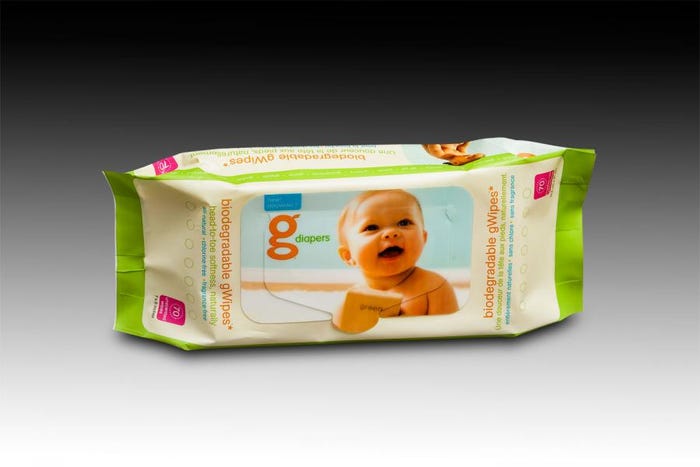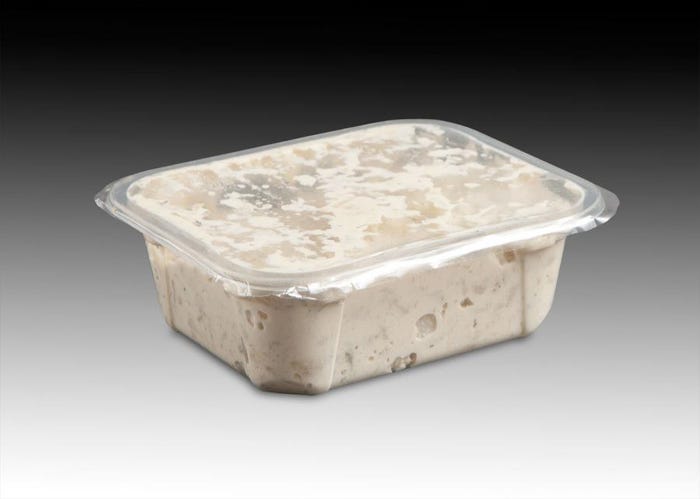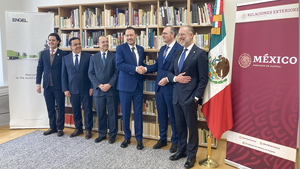Berry Plastics' Larry Goldstein details the process for packaging innovation
When you think of innovation, images of sexy tech companies such as Google and Apple come to mind. But innovation isn't just reserved for Silicon Valley. Larry Goldstein, president of Berry Plastics' flexible packaging division, believes there's plenty of innovation and R&D to be found in Evansville, IN, Berry's Midwestern home.For Goldstein, innovation means many different things, depending on your point of view.
April 16, 2013
When you think of innovation, images of sexy tech companies such as Google and Apple come to mind. But innovation isn't just reserved for Silicon Valley. Larry Goldstein, president of Berry Plastics' flexible packaging division, believes there's plenty of innovation and R&D to be found in Evansville, IN, Berry's Midwestern home.
For Goldstein, innovation means many different things, depending on your point of view.
"In packaging - innovation can be what is seen, felt and touched," he told PlasticsToday. "Innovation can also be invisible, how the package performs, how it provides unique functionality for the consumer or packer, or how it can provide the same functionality at a lower total cost. We attack the challenge from all angles. 'How can we make the package look better, be more appealing to the consumer?'"
Berry Plastics Group is a provider of plastic consumer packaging and engineered materials with annual net sales of $4.8 billion in fiscal 2012. With headquarters in Evansville, the company's common stock is listed on the New York Stock Exchange under the ticker symbol BERY.
Three of its products recently received awards from the Flexible Packaging Association. Goldstein said that the three awards illustrate Berry Plastics' commitment to innovation in all areas of converted packaging. Berry Plastics' awards included: Silver - Packaging Excellence for gDiapers Biodegradable Wipes, Silver - Technical Innovation Easy Peel Lidding for High-Pressure Pasteurization, and Silver - Printing Achievement CBI Coelho Smart Wheat.
"These products highlight the core competencies of the flexible packaging division within Berry Plastics: exceptional film extrusion expertise, high quality high impact graphics utilizing HD Flexo technologies, and most importantly innovation and creativity," he said. "Our people are challenged to think differently when it comes to packaging, not just in the flexible packaging division, but across the entire company."
Innovation process
Goldstein said when it comes to innovation the company starts with consumer insights, with an attempt to understand how and, also, where people want to see improvement in the packaging they use on a daily basis.
"We move through ideation and prototype development in order to validate concepts," he said. "Finally, we take those concepts that offer consumers and packaging customers a value proposition while differentiating their products on the shelf, and bring them to our pilot plants and ultimately our production facilities."
The company's investment strategy, which includes a nine-layer blown co-extrusion, high-speed quick-change 10-color flexographic printing presses and unique three-component, solventless, adhesive lamination capabilities, helps to support innovation and this approach to providing advanced solutions for converted packaging applications.
Rigid Lens II (RLII) closure
 The gDiapers biodegradable wipes include the Rigid Lens II (RLII) closure, encompassing the benefits of traditional peel 'n reseal labels and molded fitments.
The gDiapers biodegradable wipes include the Rigid Lens II (RLII) closure, encompassing the benefits of traditional peel 'n reseal labels and molded fitments.
"As a vertically integrated supplier, Berry Plastics is somewhat unique in this market place, and the innovation created from our expertise is just as unique," he said. "The innovation is around the closure aspect of the package."
Packaging high stack count wet wipes in a flexible package with a RLII closure alleviates the need for using molded fitments, canisters, and tubs, he said.
Berry has the ability to manufacture all components of the package, except the non-extensible print web. They extrude the sealant web, and print on both wide web and narrow web flexographic assets, then laminate, and make the semi-rigid label, Rigid Lens II.
"This semi-rigid re-closure feature provides the best of both worlds: the stiffness needed to open and close the package easily with one hand, and the flexibility to be applied in many existing flow wrapper applications," Goldstein said.
Goldstein said for some customers the company has even applied RL II to their flow wrap package in its manufacturing facility.
RL II, because it's actually a flexible film, can be printed with high impact graphics, increasing the billboard space on the top or front of the package. Since RL II is flexible, Goldstein said it can run on a lot of the existing applicator equipment with few modifications, often at faster speeds than a molded fitment.
Oftentimes standard peel and reseal labels will tunnel and wrinkle on packages with higher towel stack counts. Tunneling and wrinkling allow air to enter the package and dry out the wipes prematurely. RLII has a frame around it that forces the closure to maintain its position on the flow wrap material. As a result, the flap of the label maintains 100% surface contact with the film as the package collapses, ensuring moisture down to the last wipe, he said.
Currently, the company is selling the product in personal care applications, such as baby care, and over the counter pharmaceutical applications (like medicated pads) as well as in household cleaning products.
However, Goldstein said some of the most creative applications they are working on right now are in the food markets - dry, refrigerated, and frozen.
"Consumers continue to demand cost-effective user friendly reclosure options," he said.
Easy peel lidding for high-pressure pasteurization
High-pressure pasteurization (HPP) is a growing trend in the food industry. Goldstein said Berry's customers are seeing value in HPP because consumers are demanding healthier food options with limited or no preservatives.
In the HPP process, once the cycle is complete and pressure is released, the food quickly comes back to room temperature. This process results in better flavor, compared to retort, and destroys less of the vitamins and amino acids, he said.
"This allows the consumer to have it all, a healthy food product that has an extended shelf life and tastes good - but with none of the preservatives that have traditionally been required," he said. "It also allows the food company to move products from the freezer to the refrigerated cold chain, which is a less costly channel."
with none of the preservatives that have traditionally been required," he said. "It also allows the food company to move products from the freezer to the refrigerated cold chain, which is a less costly channel."
The HPP process requires the sealant film in the lidding to be able to perform under tremendous pressure. Traditionally, this has required a weld seal. When the consumer encounters a weld sealed package they have to either cut the lidding film away from the package or take their chances with pulling the lid off.
Goldstein said that pulling off flexible lidding, even one with a thumbhold tab, is a hit-or-miss experience. If the consumer can get it off, they often destroy the remainder of the lid, which compromises access, or end up with a lot of what was in the container on the counter, themselves or the floor.
"The easy open concept was one that our engineers embraced," he said. "As a result of our expertise and state-of-the art extrusion assets, we were able to develop a solution that performed under pressure, yet still provided the consumer an easier package to open."
Additionally, the lidding film they created performed so much better in the HPP process, Goldstein said that Berry's first commercial customer is seeing a 10% decline in leaker rates off the production line.
This package and Berry's innovation was originally designed to meet a specific consumer need and customer request for a refrigerated cheese product that is subjected to low-temperature high-pressure pasteurization.
"Adapting the technology and the film solution to other applications in the same market and expanding it to satisfy applications in different markets is fundamental to how we leverage innovation," he said. "When we create something new we think about what need we are fulfilling, and the functionality the structure is providing. Then we attempt to identify other market areas and applications where there is a similar need. Extending the value proposition of innovation into other areas of packaging is a building block to our growth as a company."
About the Author(s)
You May Also Like


